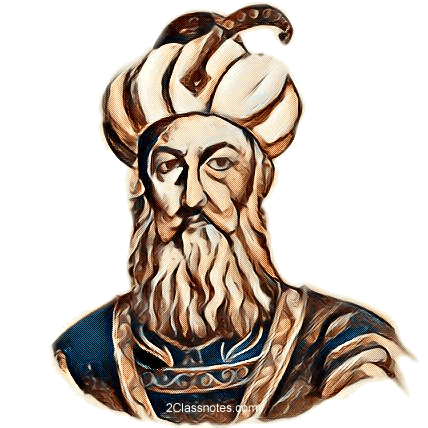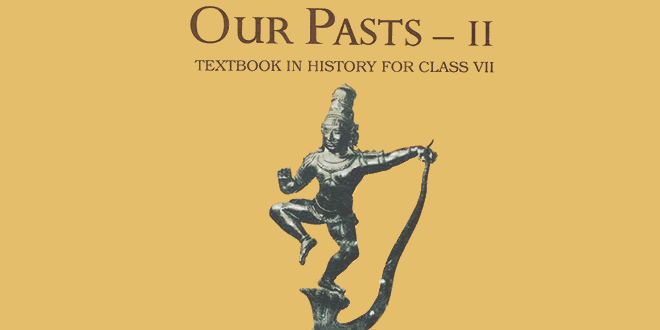Tracing Changes Through a Thousand Years: NCERT 7th CBSE Social Studies Chapter 01
Question: Who was considered a ‘foreigner’ in the past?
Tracing Changes Through a Thousand Years – Answer: The term ‘foreigner’ is used in the sense of a person who is not an Indian. In the medieval period it was applied to any stranger who appeared, say in a given village, someone who was not a part of that society or culture. In this sense a forest-dweller was a foreigner for a city-dweller. But two peasants living in the same village were not foreigners to each other, even though they may have had different religious or caste backgrounds.
Question: State whether true or false:
- We do not find inscriptions for the period after 700.
- The Marathas asserted their political importance during this period.
- Forest-dwellers were sometimes pushed out of their lands with the spread of agricultural settlements.
- Sultan Ghiyasuddin Balban controlled Assam, Manipur and Kashmir.
Tracing Changes Through a Thousand Years – Answer:
- False
- False
- True
- False
Question: Fill in the blanks:
- Archives are places where ………….. are kept.
- ………….. was a fourteenth-century chronicler.
- ………….., ………….., ………….., ………….. and ………….. were some of the crops introduced into the subcontinent during this period.
Tracing Changes Through a Thousand Years – Answer:
- Manuscripts
- Ziyauddin Barani
- Potatoes, corn, chillies, tea, coffee
Question: List some of the technological changes associated with this period.
Answer: Some notable technological changes associated with this period were:
- The use of Persian wheel in irrigation;
- The use of spinning wheel in weaving;
- The use of firearms in combat.
Question: What were some of the major religious developments during this period?
Answer: Some of the major significant religious developments occurred in Hinduism. The worship of new deities, the construction of temples by royalty and growing importance of Brahmanas, the priests, as dominant groups in society were the new changes. Brahmanas’ importance grew due to their knowledge of Sanskrit language. They were patronized by the Emperors. The idea of bhakti emerged among people. The merchants and migrants brought with them the teachings of Quran, the holy book of Muslims.
Question: In what ways has the meaning of the term ‘Hindustan’ charged over the centuries?
Answer: It has been observed that language and its interpretation change with the change of time. The term ‘Hindustan’ was used for the first time by Minhaj-i Siraj, a thirteenth century Persian chronicler. He, with this term, meant the areas of Punjab, Haryana and the lands between the Ganga and Yamuna. It was used in a political sense for lands constituting a part of the dominions of the Delhi Sultan. Though the term shifted with the extent of the Sultanate but it never included south India. Later in the sixteenth century, Babur, while using this term, meant the geography, the fauna and the culture of the inhabitants of the subcontinent. A fourteenth-century poet Amir Khusrau also used the term ‘Hind’ almost in the same sense. The remarkable point is that while the idea of geographical and cultural entity like ‘India’ did exist, the term ‘Hindustan’ did not carry the political and national meanings that we associate with it today.
Question: How were the affairs of jatis regulated?
Answer: Jatis were the sub-castes which were grouped on the basis of economic and social status. They were ranked as per their backgrounds and their occupations. Ranks were not fixed permanently. They varied as per the power, influence and resources controlled by members of the jatis. Hence the status of the same jati could vary from area to area Jatis had their own system of ruling. They framed their own rules and regulations for managing the conduct of their members. An assembly of elders was responsible for enforcing these regulations. This assembly of elders was called jati panchayat. But jatis were also required to abide by the rules of their villages.
Question: What does the term pan-regional empire mean?
Answer: The term ‘pan-regional’ was used in the sense of the areas of empires spanning diverge regions. The dynasties like Cholas, Khaljis, Tughluqs and Mughals extended their empires pan-regional. Though, not all these empires were equally stable or successful. But pan-regional rule altered the character of the regions. Most of the regions across the subcontinent were left with the legacies of the big and small states that had ruled over them. The emergence of many distinct and shared traditions in governance the economy elite cultures and languages were some of the prominent factors that took place as a result of pan-regional rules.
Question: What are the difficulties historians face in using manuscripts?
Answer: Manuscripts in early days were handwritten. Writers used palm leaves as paper for writing manuscripts. The historians used to copy down those manuscripts. Different historians presented their version in their own way as many of the words or sentences were beyond their understanding. So they copied what they understood. Later it was difficult to recognize which one was the original manuscript. Historians interpreted the facts as per the manuscripts which they got. Hence we find a number of facts with different illustrations in history.
Question: How do the historians divide the past into periods? Do they face any problems in doing so?
Answer: Time is not just passing of hours, days or years for historians. Instead it is the reflection of social, economic, cultural and religious changes that occur through the ages. Division of past into large segments—periods—make it easy to study time for historians. British historians, in the middle of the nineteenth century, divided time into three periods—Hindu, Muslim and British. This division was made on the basis of the fact that no significant change other than the religion of the rulers could occur during these periods. But as a matter of fact this division ignored the rich diversity of the subcontinent. Few historians take this periodisation even today while most of them take the economic and social factors into account in order to characterize the major elements of different moments of the past. The history of the past thousand years has seen considerable changes. As a result the sixteenth century was not the same as the eighteenth century or the eighth or eleventh centuries. Hence it is very difficult for the historians to describe the entire period as one historical unit.
Question: Compare either Map 1 or Map 2 with the present-day map of the subcontinent listing as many similarities and differences as you can find.
Answer: Map 1 and Map 2 given in the NCERT Textbook represent two different times. Map 1 was made in 1154 CE by al-Idrisi, an Arab geographer. This section is a detail of the Indian subcontinent from his larger map of the world. Map 2 was made by a French cartographer in 1720. Both maps are quite different from each other, even though they represent the same area. In Map 1 we find south India at the place where we would expect to find north India and Sri Lanka is the island at the top. The place names are in Arabic. Some familiar places like Kanauj in Uttar Pradesh have been spelt as Qanauj. In comparison to this Map 2 was made nearly 600 later after Map 1. By that time information about the subcontinent had changed a lot. This map appears to be more familiar to us. The coastal areas, particularly, are more detailed.
Question: Find out where records are kept in your village or city. Who writes these records? Is there an archive? Who manages it? What kinds of documents are stored there? Who are the people who use it?
Answer: In our village, records are kept in the Panchayat office. Gram Sevak who is a government employee writes these records. There is no archive in our village. Sarpanch manages it. The documents stored there include the record of the land of the village, data of births and deaths, the number of public properties, data of health centres, etc. Villagers use these records. The certificates are issued to the villagers on the basis of these records.
V. Very Short Answer Type Questions
Question: Who was al-Idrisi?
Answer: al-Idrisi was an Arab cartographer.
Question: Who is a ‘cartographer’?
Answer: Cartographer is one who draws a map.
Question: What difference do you notice in the map drawn by al-Idrisi?
Answer: In the map drawn by al-Idrisi we find a completely different view. Here south India is shown at the present north India and Sri Lanka is the island at the top
Question: Who used the term Hindustan for the first time and when?
Answer: Minhaj-i Siraj used the term ‘Hindustan’ for the first time in the thirteenth century.
Question:What sources do the historians use for the study of a particular period of history?
Ans. The historians use the sources like coins, inscriptions, architectures and textual records for the study of specific period.
Question: What do you mean by archives?
Answer: Archives were the places where manuscripts were collected.
Question: Who were scribes?
Answer: Scribes were those professionals who used to copy down the manuscripts.
Question: How did the scribes copy down the manuscripts?
Answer: Scribes copied down the manuscripts by hands.
Question: What changes took place during 700 and 1750?
Answer: Many technologies like Persian wheel in irrigation, the spinning wheel in weaving, and firearms in combat made their appearance. Some new foods and beverages like potatoes, corn, chillies, tea and coffee also arrived in the subcontinent.
Question: What factors contributed to the variety of developments?
Answer: The new technologies and innovations came to the subcontinent with the people who came from other areas and settled here.
Question: What were the new groups of people to be prominent in this age?
Answer: Rajputs, Marathas, Sikhs, Jats, Ahoms and Kayasthas were the groups which came to be prominent in this age. They availed most of the opportunities of the society.
Question: What do you mean by Jati Panchayat?
Answer: Jati Panchayat was the assembly of elders which controlled the conduct of the members of their jati They had their own rules and regulations.
Question: Who was the Chief of the village?
Answer: Villages were controlled by a Chieftain. Even the smaller Jati Panchayats were bound to follow the village administration.
Question: What was the stretch of Delhi Sultan Ghiyasuddin Balban’s Empire?
Answer: According to a Sanskrit Prashasti Delhi Sultan Ghiyasuddin Balban’s empire was stretched from Bengal (Gauda) in the east to Ghazni (Gajjana) in Afghanistan in the west. It also included all of south India (Dravida).

Question: Why did Brahmanas dominate in the society during this period?
Answer: Brahmanas were the only class of people who were proficient in Sanskrit language. This was the reason that made them prominent.
Tracing Changes Through a Thousand Years – Question: Who were the patrons?
Answer: Patrons were a group of the rulers and rich class of people who provided protection and livelihood to the brahmanas, artists and poets.
Question: What was the major development of this age?
Tracing Changes Through a Thousand Years – Answer: The emergence of the idea of bhakti was the major development of this age.
Question: How history was divided by historians during the middle of the nineteenth century?
Answer: The British historians divided the history of India into three periods:
- Hindu
- Muslim
- British
Tracing Changes Through a Thousand Years – Question: What was the basis of such division?
Answer: Such division was made on the basis of the religion as the historians did not consider any aspect more prominent other than the developments in religions.
Short Answer Type Questions: Tracing Changes Through a Thousand Years
Question: What difference do you trace out in the region of Hindustan of thirteenth century and the modem India?
Answer: The term ‘Hindustan‘ in the thirteenth century implied the areas of Punjab, Haryana and the lands between the Ganga and Yamuna. Minhaj-i Siraj used the term in a political sense for lands consisting of a part of the dominions of the Delhi Sultanate. The areas included in this term shifted with the extent of the Sultanate. However, it never included south India.
Question: What does time mean for historians? How does it help them?
Answer: Time, for historians, doesn’t mean just a passing of hours, days or years. Instead it reflects changes in social and economic organization, in the persistence and transformation of ideas and beliefs. In order to study historical developments historians divide the past into large segments. It makes the study convenient. The historians study different aspects of the specific period and then assess the comparative developments their impact on society and their contribution to future generation.
Question: What do you mean by pan-regional rule? What was its impact?
Answer: Pan-regional rule applies to the trend of extending the empire to the region beyond one’s own state. With the decline of the Mughal Empire in the eighteenth century many regional states emerged. Consequently a chance of sharing different traditions in the realms of governance, economy, elite cultures and languages was brightened. People knew a lot of new thing, manners etc without losing their own culture and identity.
Question: What was the process of copying manuscript? What were its drawbacks?
Answer: As there was no printing press during the period between 700 and 1750, Scribes used to copy down the manuscripts which were hand-written. Sometimes it was difficult to recognize the original script. So the Scribes used their own way of interpreting the facts. Consequently, there were differences were found in the copies written by different Scribes. As all the copies were handwritten, it was difficult to recognize which was the original one. It was the drawback of such copying.
Question: Trace out the major changes in the society during 700 and 1750? What was its main reason?
Answer: A number of changes took place in society during 700 and 1750. This period traced the technological appearance of Persian wheel in irrigation, the spinning wheel in weaving and firearms in combat. Potatoes, com, chillies, tea and coffee were some of the new foods and beverages. These developments came with the arrival of the people who migrated to this land. As a result this period saw various changes in the economic, political, social and cultural life,
Question: What was the change in the religion of the time? Trace out major developments?
Answer: The period between 700 and 1750 witnessed major changes in religion. It was seen prominently in Hinduism. The worship of new deities, the construction of temples by royalty and the growing importance of Brahmanas, the priests, as dominant groups in society were some of the major developments. The idea of bhakti emerged. Merchants and migrants brought the new teachings of ‘Quran’, the holy book of the Muslims. A class of patrons emerged. They were the rulers who provided shelter and protection to the ulemas—the learned theologians and jurists. Muslims were divided into two groups—Shia and Sunni. Shia Muslims believed in Prophet Muhammad’s authority while the Sunnis accepted the authority of the early leaders—Khalifas.
 Class Notes NCERT Solutions for CBSE Students
Class Notes NCERT Solutions for CBSE Students



